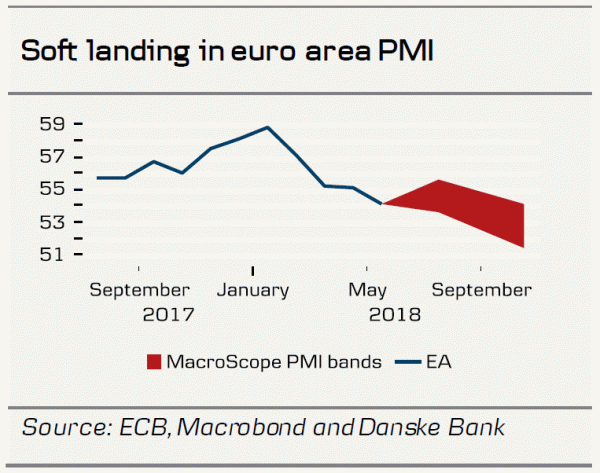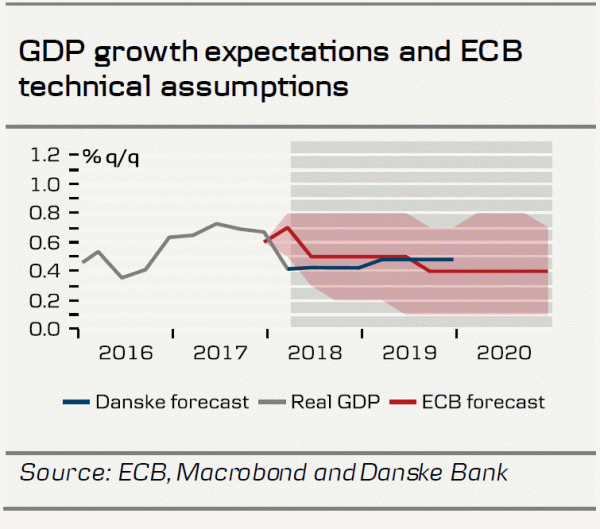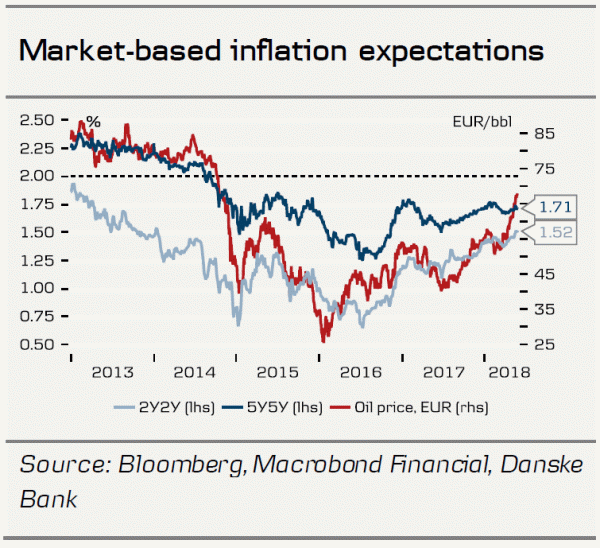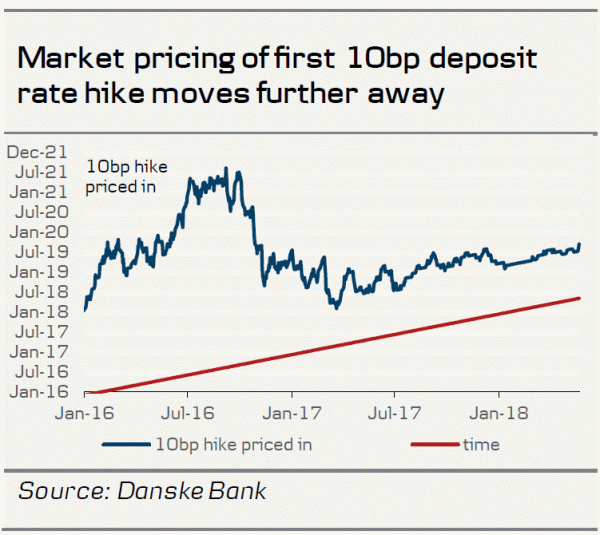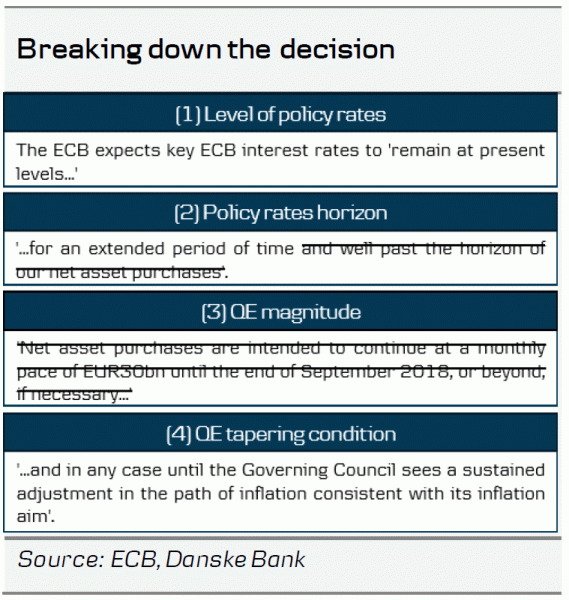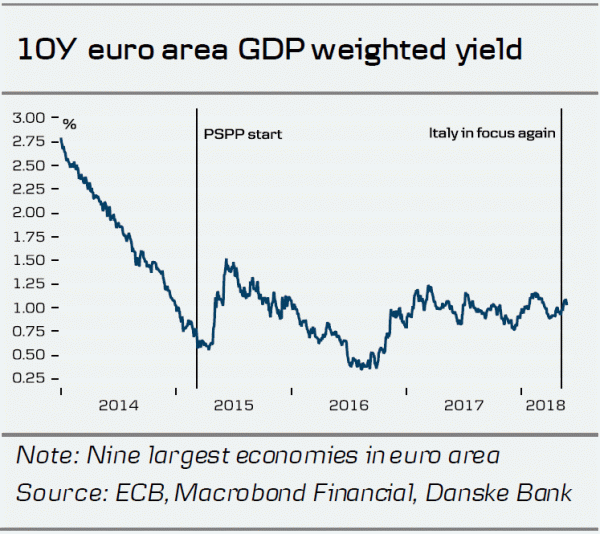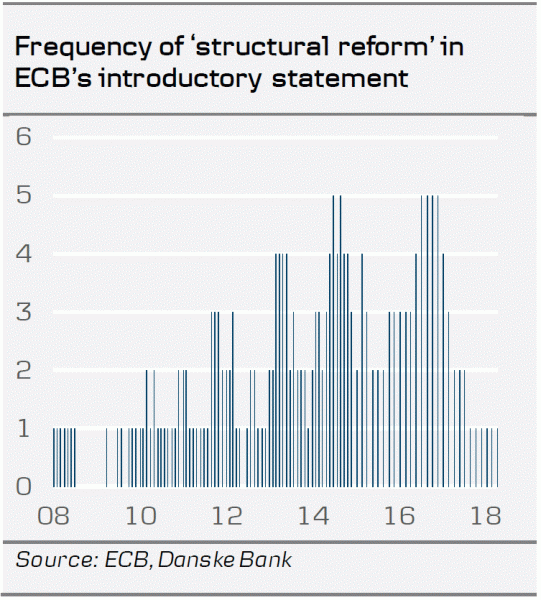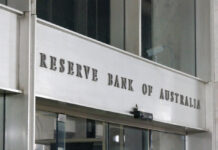Being ECB President Mario Draghi these days may not be as easy as in previous years. The monetary policy blueprint has been laid out years ahead ever since the crisis started and we are now approaching a focal time when markets firmly expect the end of APP. At the same time, growth dynamics are moderating, the economy is hitting capacity constraints, inflation is disappointing and a new (potentially) unknown factor in Italy makes Draghi’s job more challenging. We outline some of the current challenges below.
Weaker data – growth/capacity constraints
Data has been surprisingly week in the euro area over the past two months. The surprise index is still close to its (negative) two standard deviations level. We see increasing arguments for why the recent moderation is more than just a temporary factor and, as such, more-permanent factors are at play, in particular capacity constraints such as a shortage of skilled labour supply. Different surveys at a European level show that up to 70% of companies point to a skilled labour shortage as the main restraint to growth.
Both hard and soft indicators have declined. In particular, the important PMIs (composite) have declined consecutively for four months now to stand at 54.1 in May. While the soft landing from the very high PMI levels late in 2017 was expected, our MacroScope model points to further moderation in the late summer/early in Q4. The model points to PMIs printing in the 54 area during the summer period and settling slightly lower around 53 towards the end of the year. Overall, we still expect euro area growth this year to be around 2%, somewhat lower than pointed to by the ECB’s staff p rojections in March.
As already discussed in our ECB Preview – Not on Draghi’s watch, 20 April, we expect the ECB to revise down its growth forecast in June, on the back of the moderation in data. In M arch, the ECB’s governing council termed growth to be ‘strong’. However, in April, it struck a slightly more gloomy tone of growth being ‘solid’ (which was also used in January’s introductory statement). Given that euro area Q1 GDP came in at 0.4% q/q while the ECB assumed 0.7% q/q in its March staff projection, the lower Q1 print suggests a marked downward revision of the 2018 growth estimate to c.2.2% to come in June (2.4% in March).
Inflation and wage growth – gradual upward trend set to resume
Both core and headline inflation fell short of market expectations in both March and April but as the trajectory for, in particular, core inflation is still upward sloping, it should not be an imminent worry for Draghi. The minutes from the April meeting revealed that the ECB has unchanged confidence in the convergence of inflation towards its aim, despite the growth moderation as of late, not least because of encouraging signs from a pickup in wage dynamics in some euro area countries – namely Germany, where negotiated wages have started to rise. Market-based inflation expectations have also risen, likely driven by the recent oil price rise, but long-term inflation expectations (5Y5Y) remain below the 2% target.
We expect Draghi and company to watch closely whether core inflation rebounds to previous levels in May (we get the flash release on Thursday 31 May ahead of the 14 June meeting). This will also have important implications for the timing of the next change in the forward guidance, which we expect to come in July. Our view remains t hat core inflation will rise only very gradually in 2018, averaging 1.1% before accelerating to 1.4% in 2019 on the back of rising wage growth and service price inflation. Although headline inflation will pickup towards the summer due to oil price base effects, we expect the ECB to look through these temporary factors and focus on the underlying price pressures.
Market pricing – we’ll cross the bridge when we get there
Markets are currently pricing a first 10bp deposit rate hike in September 2019 and a 20bp hike in January 2020. Expectations on the timing of the first hike have been pushed out recently on the back of Italian worries and market participants buying into the slow policy normalisation response. While the Italian worries may abate at a later stage, the reactiveness (contrary to proactiveness) is still visible within the ECB, just as Draghi said in the March press conference. Further, we emphasise that the ECB ending QE does not automatically imply a rate hike after a given period (see more below). The size of the first hike is still uncertain, as mentioned by several Governing Council members, and any discussion on this is seen as ‘p remature’ by the ECB. We believe the idiom ‘we’ll cross that bridge when we come to it’ applies very well to this. We discussed the elements feeding into the discussion in ECB Research – 10bp, 20bp or …? ECB in uncharted waters, 20 March.
Monetary policy – not leaving policy rate hike open
Our long held conviction that QE can be ended as growth is good and deflation risk is gone, while rate hikes are linked to inflation dynamics, was again supported on Wednesday night. When talking QE, Slovakian Governing Council member Jozef Makúch said ‘Now we can afford to wind it down, GDP is at nice levels’, yet on inflation ‘From a medium-term perspective, we are convinced that this goal is being met and we expect that nominally, we’ll be at the goal in 2020-21’. We believe that Draghi shares this view.
We do not believe the moderation in growth dynamics has altered expectations that QE will come to an end this year, as growth is still ‘solid’, above p otential. Therefore, unless we see a significant fall in both hard and soft indicators, we intend to keep to our call of ending bond purchases by the end of the year, c.f. balance of risk assessment below.
We expect Draghi and the ECB to make sure the prospect of the first rate hike is well communicated and anticipated by markets. Therefore, we are convinced that once APP comes to a halt and reinvestments continue, the language surrounding the first rate hike will not be left open or without proper guidance. In our view, we expect the current decision to record only marginal changes to reassure the forward guidance on rates. In the breakdown of the decisions in the table on the right, we have crossed out the parts to which we expect to be removed once APP comes to a halt and the guidance on interest rates to gain increasing importance on the inflation dynamics/outlook (or as Draghi and company call it SAPI = ‘sustained adjustment in the path of inflation’). Therefore, we see the balance of risks as skewed to a longer than three months extension compared with a sudden stop.
For any extension/tapering of QE, we still expect a three-month extension into Q4 18 for the APP (of EUR15bn per month). This said, we recognise that the balance of risk is for a longer than three months extension, as already communicated by Draghi (and most recently Benoît Coeuré): the ‘baseline expectation is, as Mario Draghi has said, that there will be no sudden stop ‘.
When should next change come – we expect July
We expect the next change in forward guidance to be announced at the 26 July meeting, as we believe the June meeting is likely to be dominated by sources of uncertainty regarding moderation, downward growth revisions and the ECB’s lack of urgency to announce changes. Generally, we do not see the ‘risk/reward’ of the ECB acting pre-emptively compared with post-fact as being balanced, or as Draghi said in the March press conference ‘the policy continues to remain reactive and not proactive’. Therefore, we do not rule out the possibility of a 13 September announcement, although it all depends on the communication that will be conducted in July.
Italy – a concern in the medium term for monetary policy
For monetary policy, the Italian election should not cause big worries for the ECB at this stage. Slight market pressure may even be welcomed in Frankfurt. As a metric on which to gauge the degree to which the ECB should be worried about financial markets developments is the GDP-weighted 10Y yield. While the GDP-weighted 10Y yield cannot be observed, it is, nevertheless, computed and monitored by the ECB (the staff projections even have reference to this measure). The 10Y yield has increased by only around 10bp to 1.08% over the past two weeks, during which time the market has renewed its focus on Italy. In the grand scheme of things, the rise is therefore modest and significantly below the level at the time of PSPP expectations were built in H2 14, albeit still around 50bp higher than at the start of QE. It currently ‘trades’ at the top end of its range over the past 1.5 years. We expect the ECB to become significantly more worried about Italian market developments at a much higher spread level to Germany than its current 195bp level.
While a sharp sell-off in BTPs should cause concern for ECB monetary policy at the current juncture, the lack of reform willingness in Italy should create concern for the ECB, in the medium term. Indeed, the ECB has been calling for structural reforms (more or less) continually since 2009, although it is to a much lesser extent now than just 1.5 years ago.
In conclusion
While the euro area outlook is more ‘clouded’ (as ECB Chief Economist Peter Praet said yesterday) and the uncertainties have increased for the ECB and Draghi, no new information has forced them to change their stance at the current juncture but close monitoring is warranted on several fronts. Therefore, bond purchases are likely to end by the end of the year, with a rate hike only once inflation is ‘SAPI’.




